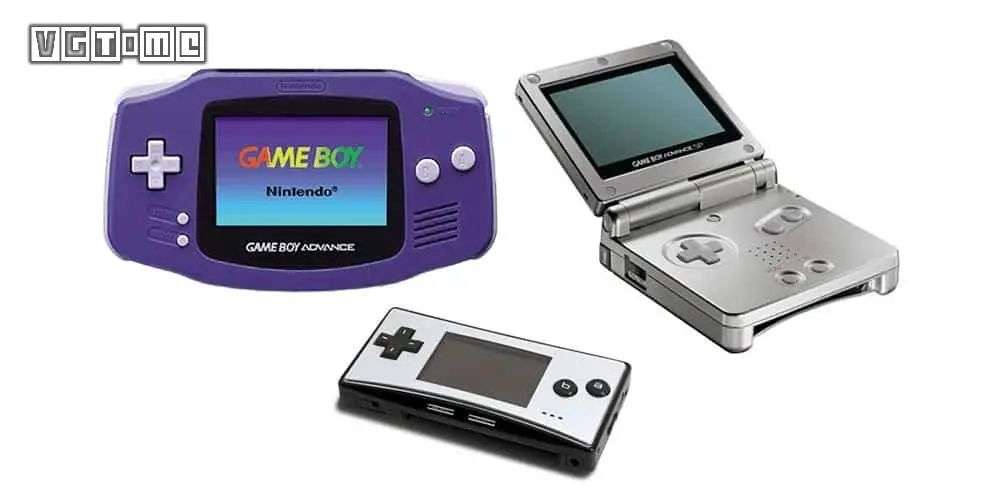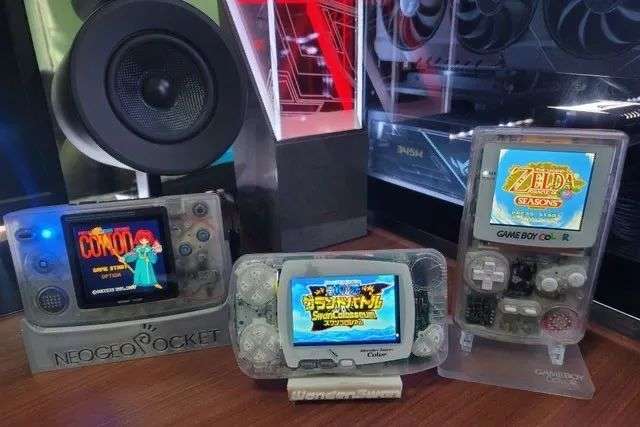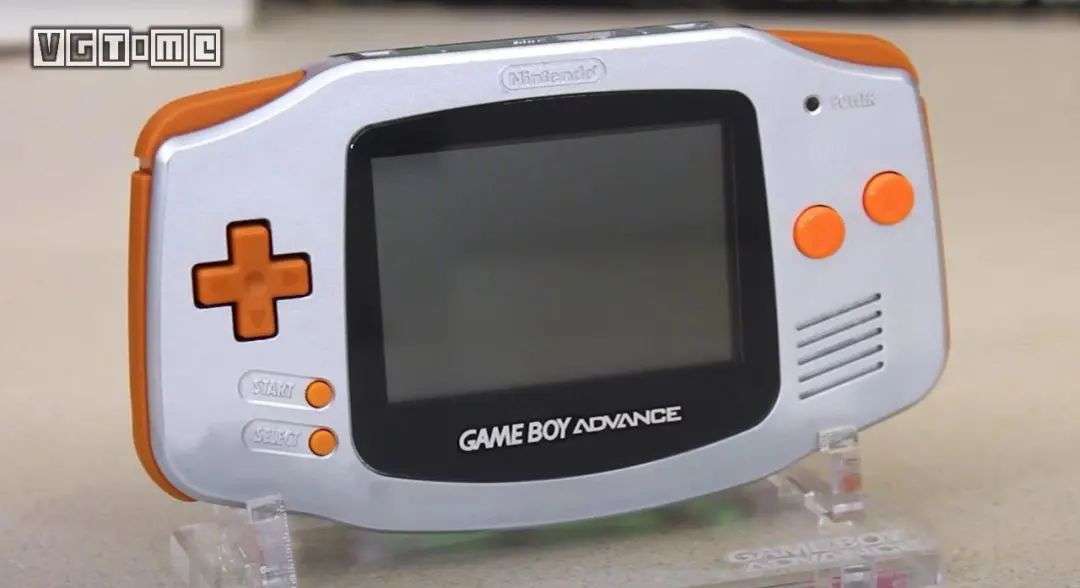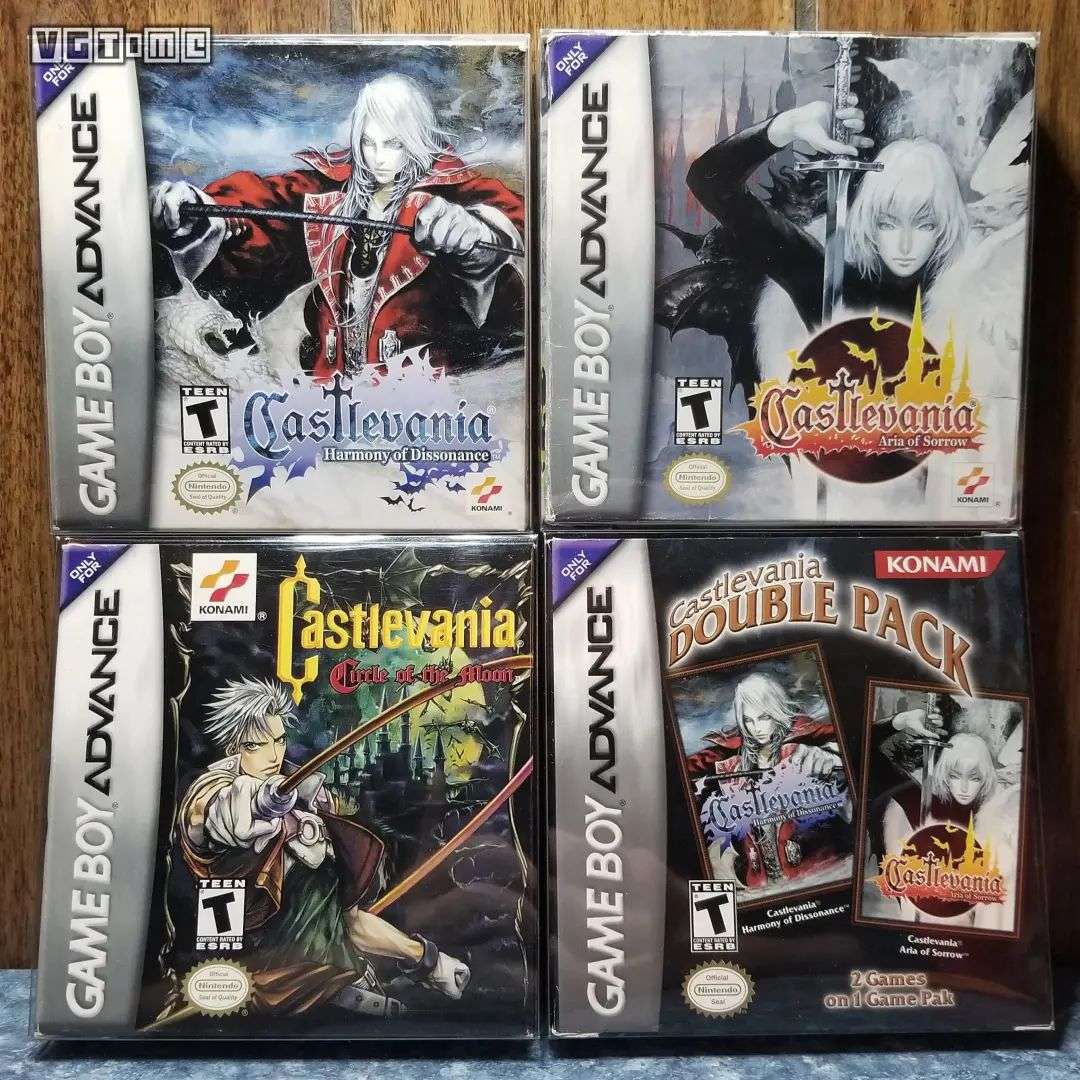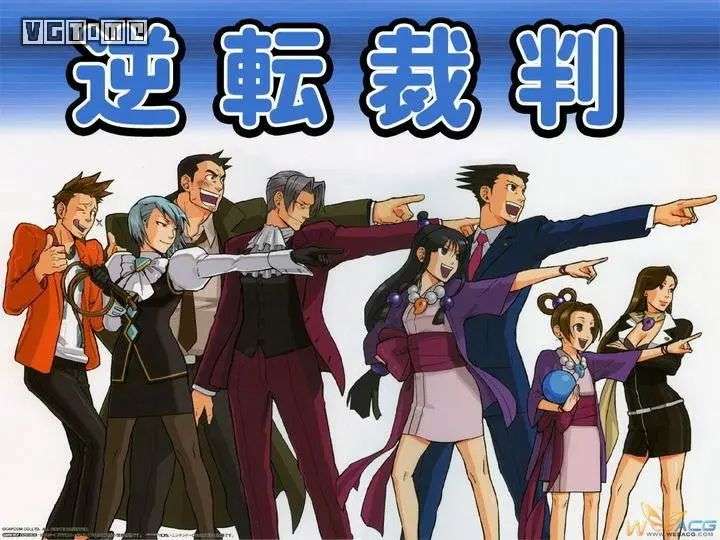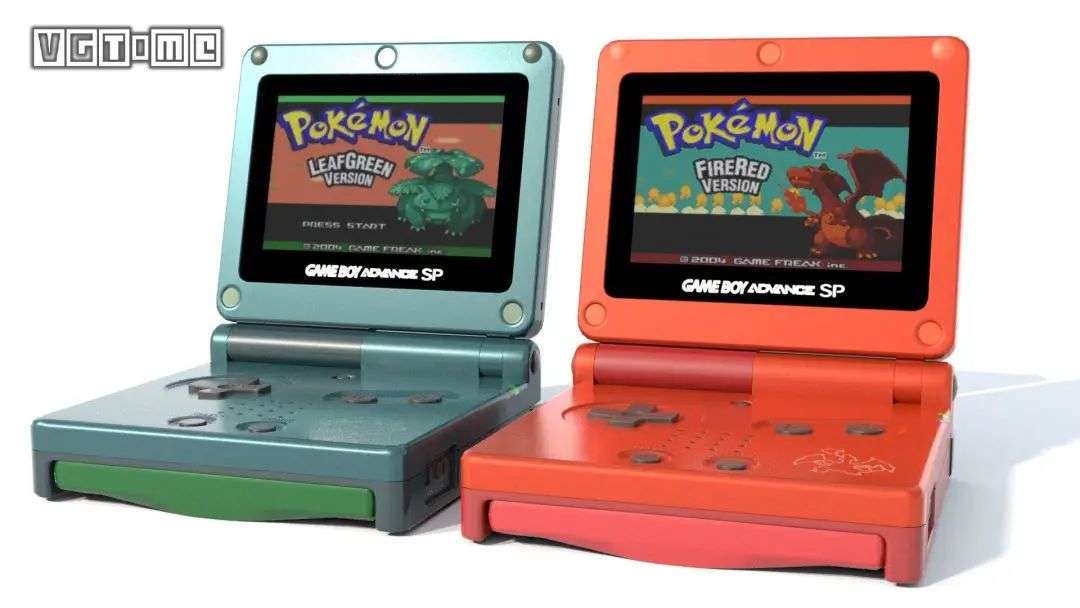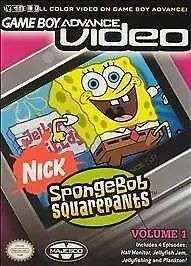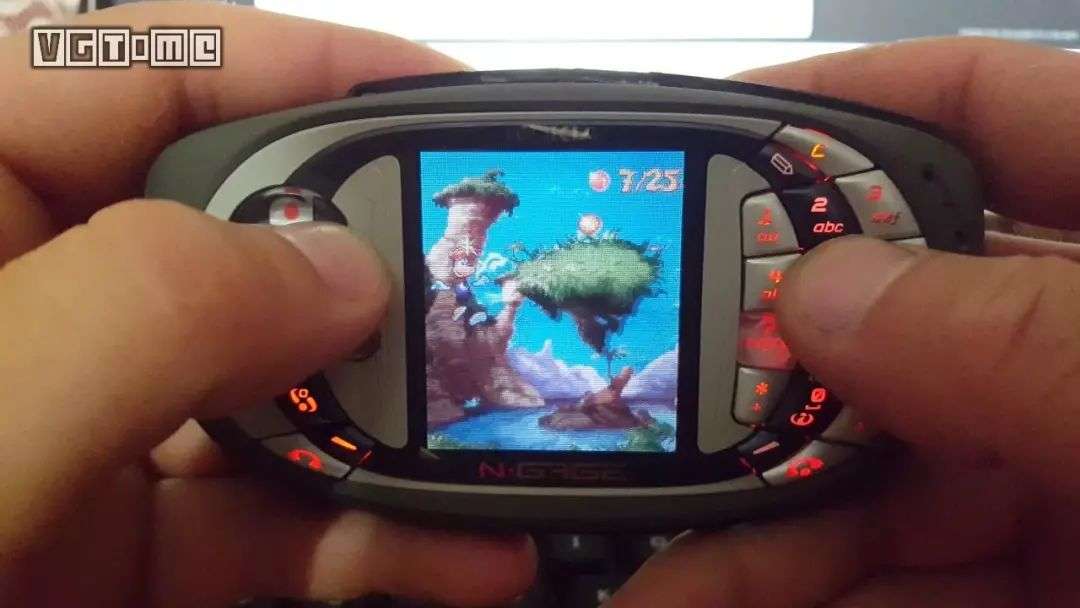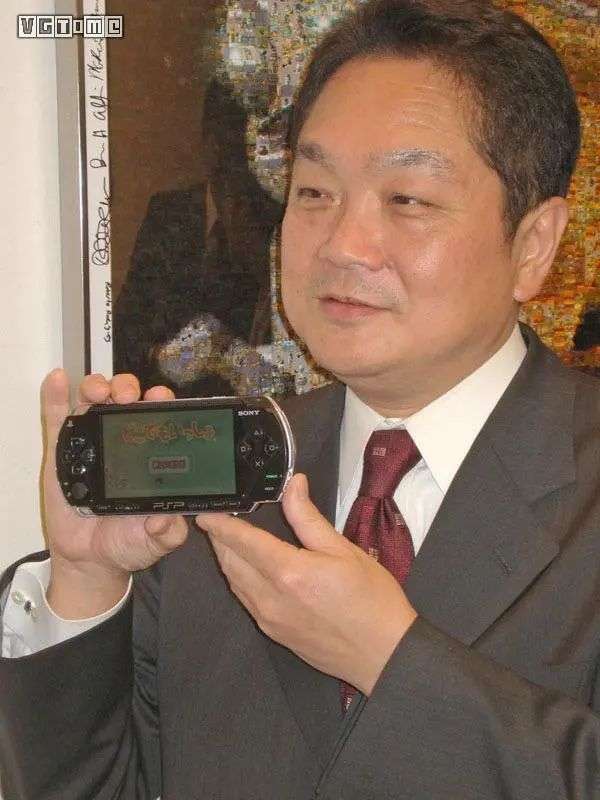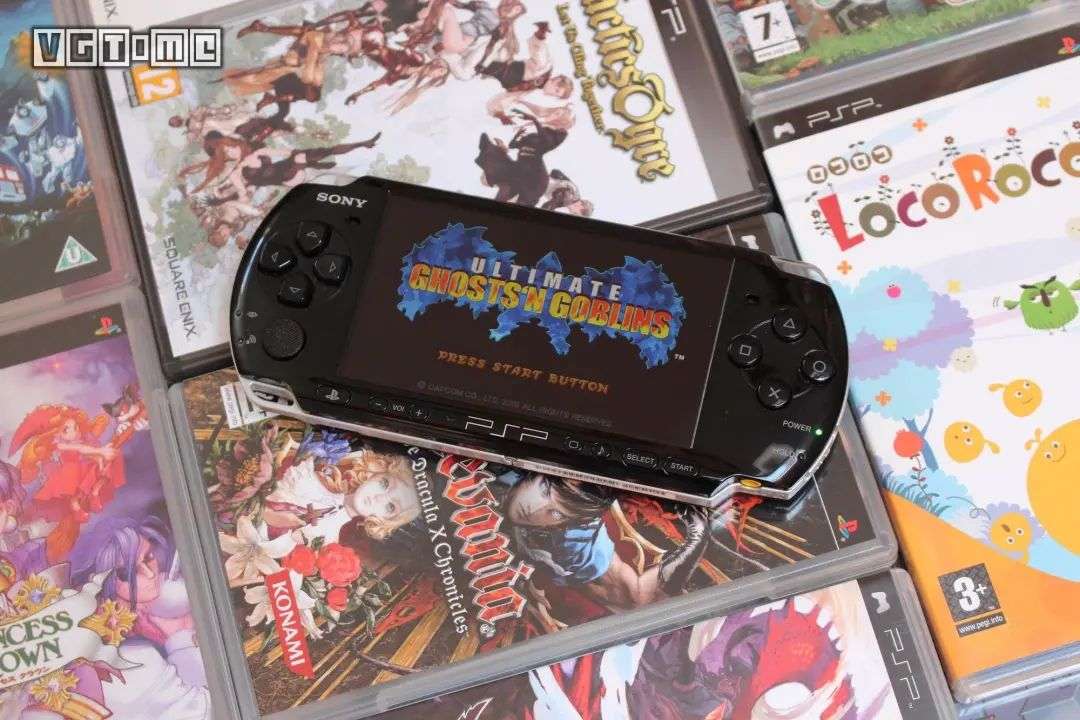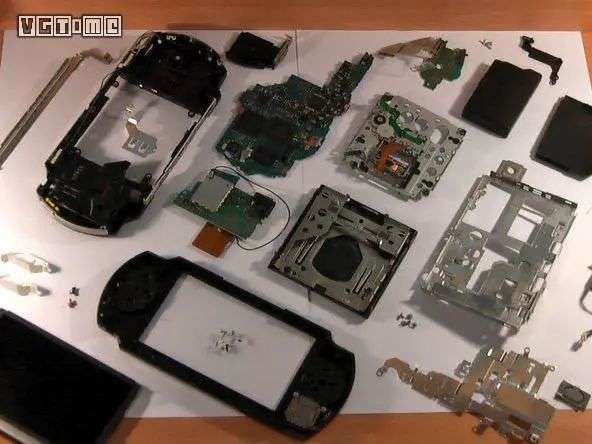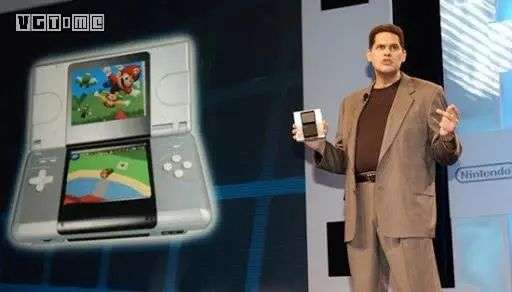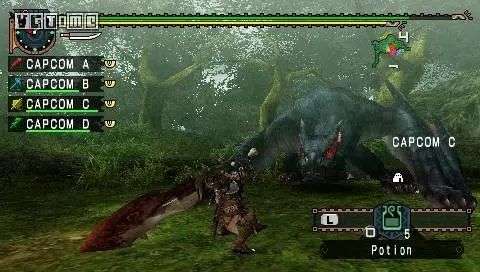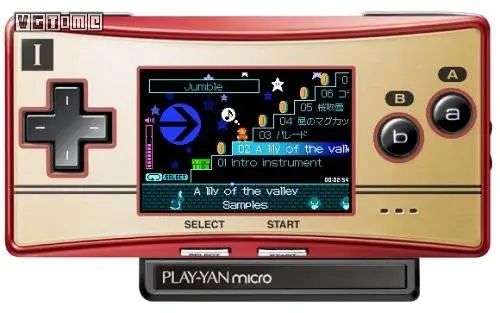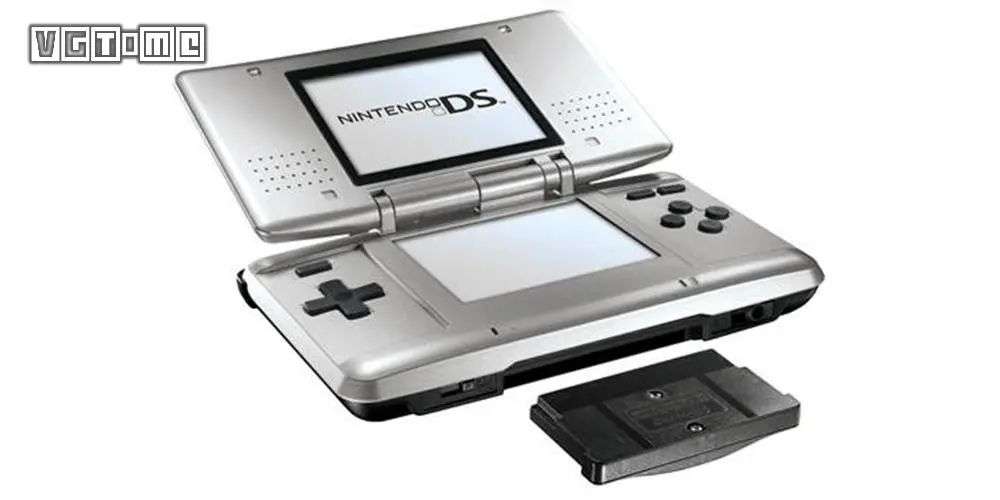The story of a generation of handheld king GBA and his opponents.
Editor’s note: This article is from the WeChat public account “Game Time VGtime” (ID: VGTIME2015), author: post-80s writer.
In April 2021, GBA, a generation of handheld kings, ushered in its 20th anniversary. Many articles are reviewing how the GBA family was so beautiful that year, but in this issue of the ancient times, I would like to share with you the emerging handhelds that once challenged the king from 2003 to 2006, and how to force a generation of kings down. The story of the throne.
GBA family
Infinitely beautiful debut
In 2000, Nintendo hosted a special show on Nintendo Space World. It was not Shigeru Miyamoto or Genhiro Taketa who pushed the atmosphere to the first climax. It was the new Nintendo executive vice president Atsushi Asada who took the stage first.
Faced with the crowds under pressure, the 67-year-old former Sharp Vice President began to share the good news that GameBoy’s sales exceeded 100 million units. Just when everyone thought it was the usual performance report next, and the heavy news was still coming, Asada suddenly changed the subject, “It’s time for us to look at the new product”, and then took out a set from his pocket. Exquisite handheld with a Yingying grip.
GBA was born, began its own legendary story, and continued the glory of the GB family! .
Atsushi Asada shows GBA to the world for the first time
AsadaAt the meeting, Tuk emphasized the “simple and complete” concept of the new handheld in terms of design and functions, and also stated that it is not realistic to force the use of 3D technology on the handheld at the moment. The biggest selling point of GBA is the 15-hour long battery life provided by two AA batteries, a higher-resolution color screen, lightweight size and weight, and a super rich game lineup. Each one is enough to excite handheld enthusiasts.
If you use a poem to describe the state of Nintendo in the handheld industry at this time, it’s probably “drawing a sword and looking around at a loss.” What Li Bai is at a loss is the difficulty of traveling, while what Nintendo is at a loss is the invincible loneliness.
At this time, the main challengers of GBA are the “legacy” WSC of Nintendo’s legendary hardware designer Junhei Yokoi, and SNK’s NEOGEO POCKET COLOR (NGPC). Both handhelds were one or two years before GBA was launched. On the market, classified by generation should be regarded as the device of the previous generation, at this time it can barely be regarded as Nintendo’s “main rival”. After all, in the field of handhelds, the gap between generations is not so obvious, so in the 1980s and 1990s, there were often grand scenes of various handhelds showing their magical powers.
Of course, the biggest winner is Nintendo.
I have to say that Nintendo’s appeal in the handheld field was just like Apple’s in the mobile market. Even if there are more new features on Android devices that iOS does not have, as long as Apple follows up, it will inevitably trigger a new round of “buy”. burst”. Similarly, although there have been many handhelds in the past that wanted to suppress Nintendo in performance, especially Sega, whether it is the Nomad compatible with home machine cassettes or the GB-standard GameGear, it is because of portability and endurance. Defeated by the lack of. Coupled with the loss to Nintendo in the battle for important IP such as “Tetris”, Nintendo has completely dominated the handheld market in the past ten years. Although later WS and NGP were able to catch up with GB in terms of portability and battery life, and their respective follow-up models WSC and NGPC also made up for the lack of color, but when Nintendo followed up with the introduction of GBP/GBC, it could quickly suppress their opponents.
However, this does not mean that Nintendo has taken the development of new handhelds lightly. In fact, the team responsible for GBC research and development has spent two full years on GBA research and development, of which more than a year has been used to determine the 32-bit CPU-ARM7TDM, and the Xia Xia for backward compatibility with previous generation games.Common LR35902 two chips, and build various systems around them.
Before 2000, mobile phones had begun to be miniaturized, and Nintendo once wanted to use this model to produce a more compact, portable, and high-performance handheld. However, the production capacity of these sophisticated mobile phone components at the time was far from Nintendo’s needs, and they had to constantly make trade-offs between the design of the handheld and the design of the circuit board.
Nintendo’s designers made a large number of models. Using almost the same material as GBC, the screen was moved between the palms. After several twists and turns, the problem of the position and thickness of the battery was solved, resulting in a more stable Grip and lighter feel.
One of GBA’s many prototypes, the picture is an online auction item
At the same time, Nintendo also learned a lesson from the failures of other handhelds, and did not follow the trend and invest in the popular 3D technology on the handheld at the time, because this will greatly affect the battery life of the GBA, and one needs a long-term The competitiveness of a handheld handheld with a power supply in the market is bound to be greatly reduced.
With this kind of products with distinctive concepts and features, Nintendo’s advantages in top-tier IP have become more and more obvious. In 2001, only Nintendo’s “Mario Series” launched 4 works on GBA, including “Super Mario Advance” and its sequels, “Mario Racing Super Tour” and “Wario Continental 4”. The two “Super Mario Advance” are just transplants of the console version, and “Mario Racing Super Tour” is the first time to land on the handheld platform, but this does not damage their harvesting ability in sales.
2001 was also a year when Nintendo’s second and third-party vendors shined brightly.
The second-party manufacturer Camelot has brought the hand-held masterpiece “Golden Sun”; Konami, which has a close relationship with Nintendo, has successively launched the “Devil City Series” three palms on GBA since this year. Machine works — Castlevania Moon Reincarnation, Castlevania White Night Concerto and Castlevania Aria Waltz; Capcom launched the “Reverse Referee Series” that later shined in this year; Even Namco and Sega, who were previously in conflict with Nintendo, also brought their respective mascots-Pac-Man and Sonic,Joined the GBA camp and achieved the expected success.
“The Castlevania series” has achieved great results in GBA
“Reverse Referee” starts its own legend on GBA
In 2002, the 16.22 million copies of “Pokemon Ruby·Sapphire” appeared on the market. A large number of players started the game and handheld in the form of “packaged”, which once again set off a wave of handhelds.
Thanks to the complement of these excellent works and GBA, this Nintendo’s new handheld, which was launched in March 2001, quickly broke the 10 million and 20 million mark in sales, easily crushing any rivals in the same period, Nintendo even The year-end shipment target at that time was set at 24 million units… In any case, at this time, GBA has successfully taken over the authority of the predecessor GB and continued the glory of the GB family.
It wasn’t until the GBA dominated the handheld field for two years that those competitors of the same size as Nintendo woke up. GBA’s opponents began to show up in 2003, trying to attack the throne.
2003-the beginning of the dispute
From the time when the handheld market really entered the gaming era, from the Game&Watch family to the GameBoy family, Nintendo has always been in an advantageous position. Especially the GameBoy family, it can be said that it has established an absolute rule. However, since 2003, GBA challengers have appeared within a year, causing the handheld industry to fall into trouble.Into the crazy benchmarking and game.
From today’s point of view, although GBA is an expensive 32-bit handheld, it has obvious advantages and disadvantages in all aspects. It seems that it is a little weak to fight the aggressive wave of new handhelds. In order to consolidate its advantages, Nintendo took the lead in introducing an improved model GBA SP in February 2003.
GBA SP is extremely rare to abandon almost all the previous design, changed from a straight board to a clamshell. When closed, the volume is only about half of GBA. It is more compact and portable, which makes people love it. Correspondingly, the cassette slot has also been moved. Go down to the bottom to facilitate the use of special peripherals such as GB Camera. Compared with GBA’s dim screen, GBA SP uses a brighter LCD screen and a switchable front light. Later, a back-backlit version AGS-101 was introduced. It can be considered that the screen-related problems have been completely solved without the iterative process.
But as the saying goes, it will affect the whole body. Such drastic changes are bound to cause battery life problems. After all, the power that two AA batteries can provide is limited. GBA SP has been changed to a customized rechargeable lithium battery, which can last for 10 hours after charging for 3 hours. Hours, it can be said that all the shortcomings of GBA have been upgraded. Players naturally bought it very much. In the entire life cycle, GBA SP sold 43.52 million, accounting for about 53% of the total sales of GBA, which shows its market acceptance.
GBA SP is the best selling sub-product in the family
Not only that, Nintendo also launched a video format called “GBA Video” and authorized Majesco of the United States to release “Dragon Ball GT”, “Game King”, “SpongeBob SquarePants”, “Pokemon”, “Disney Channel” and “Monsters” “Shrek” and other animations and movies; then in 2005, “Play-Yan” was launched, a cassette peripheral that can insert an SD card and play MP3 and MP4 on GBA. The intention of these operations is quite obvious, that is, to face a wider range of entertainment needs, against opponents who try to use this as a weapon.
“When you stare at the abyss, the abyss is staring at you.” When Nintendo had to give up because of production capacityWhen designing their handhelds based on the mobile phone hardware architecture, the mobile phone industry is not a benchmark for Nintendo. Therefore, in 2003, the first to attack Nintendo was not their rivals Sony or Microsoft in the console industry at the time, but the communications equipment manufacturer Nokia.
“SpongeBob SquarePants” is one of the most popular products on “GBA Video”
This Finnish mobile phone manufacturer had a mobile phone market share of over 38% in 2003, and mobile games such as “Snake” also once set off a boom in games on mobile devices. When the Symbian system gradually took shape, giving developers the ability to achieve unprecedented mobile gaming experience, Nokia also began to break ground in the game field.
In 2003, Nokia launched the N-Gage mobile phone. In the core functions of mobile phones, it emphasizes various one-click entertainment methods: Bluetooth connection, GPRS wireless Internet access, radio, MP3 player, and with Nokia’s invincible Symbian system at the time, it is undoubtedly a “smart phone”. The top configuration.
As a “handheld”, N-Gage not only adopts a design similar to GBA in appearance, but also changes the navigation key to 8 directions, which provides the possibility for game design that requires higher precision operation.
In terms of games, with the support of EA and Capcom and other major game manufacturers, Nokia has successively launched 58 works on N-Gage, including “Split Cell”, “Ghost Recon” and “Tomb Raider” “Special customized versions of well-known IP such as “Call of Duty”, “Civilization”, “Lehman”, “FIFA” and “Spiderman”.
There are also many excellent original games on N-Gage. The turn-based tactical game “Road to Glory” was one of the first games to achieve online battles through the mobile network. “Pocket Kingdom” realized an alternative MMORPG. The fighting game “ONE” realized what was rare even on handhelds at the time. 3D fighting experience.
Most of N-Gage games
It is not difficult to see that the entertainment experience provided by N-Gage has exceeded the scope of a mobile phone at that time. Nokia hopes to use a handheld with mobile phone attributes to separate players from a pure handheld platform, and the goal is directed at GBA. This idea of ”comparing ideas” has attracted a lot of attention. Although N-Gage does not have a national version, it once became the target of parallel importers competing for promotion. The subsequent N-Gage QD once became a domestic mobile phone store. Darling.
However, in the end, the N-Gage series only sold about 3 million units. For mobile phones with a very high update cycle and frequency, this number seems to be unsatisfactory, but as a game machine, such a shop The volume can only be regarded as a failure. Of course, when people define N-Gage, they rarely define it as a “game console”, which makes N-Gage’s various problems (especially positioning) quite conspicuous.
Although N-Gage games are quite distinctive, they are difficult to match GBA in terms of quantity and quality; awkward command input keys and cassettes that must be removed to replace the battery all affect the overall gaming experience of N-Gage The strange earpiece position also makes potential consumers (such as business people) who have the ability to consume such devices but also to pay attention to image choose to give up; only 2-4 hours of battery life under continuous games, which has a great impact on portability, and A group of people who have a heavy demand for the game were dissuaded; the price of US$299 was too high compared to the GBA SP, which was only US$99 at the time, which discouraged many players.
A “spoof carnival” triggered by N-Gage’s strange call method
As the first opponent of GBA in the new generation, N-Gage, nicknamed “TACO”, was defeated before long. When a new wave of consoles arrived, the awkwardly positioned N-Gage series had to leave sadly.
Nevertheless, Nokia still stubbornly supported the discontinuation of N-Gage until 2006, which gave it a chance to witness the appearance of the two real rivals of GBA-PSP and NDS, and the whole process of their end to GBA’s rule.
A full-scale confrontation, the enemy is myself?
After the unprecedented success of the PS and PS2 consoles, the energetic Sony showed greater “ambition”, not only to pull Nintendo from the throne in the field of consoles, but also to start gearing up, aiming at the one that has been ruled by Nintendo for many years. In the field of handhelds, a full-scale confrontation has been opened.
In 2003 E3, the then president of Sony Computer Entertainment, Kurakura Ryaki Ken once again boarded the stage of Sony’s pre-show conference to show the world their ambitions. Sony will develop high-quality portable game consoles based on the PS2 presentation. ——PlayStation Portable, the name illustrates Sony’s goals well.
Jiu Kuai Liang Mu Jian display PSP
If the appearance of the Walkman in 1979 brought a revolution in portable entertainment, then PSP will be the “Walkman of the 21st Century”. This is the declaration of Kurakura’s confidence in his first handheld.
That said, it is obviously not enough to rely on the achievements accumulated in the console game market to fight against Nintendo, which has been alone for many years in the field of handhelds. Sony must create products that are trending and differentiated enough, perhaps to create a more comprehensive entertainment experience, or to make major innovations in gameplay. Like N-Gage, PSP and N-Gage choose the former.
“PSP YiyouDrama is the core, but it is not only a game console, but also an entertainment device. “The “uncle” Kazuo Hirai, who was still SCE’s deputy to Ryaki Kudura, made a precise supplement to the positioning of this product.
Sony hopes to become the PSP of the “21st Century Walkman”
Since it is a comprehensive entertainment demand, it naturally requires the cooperation of hardware modules. Unlike N-Gage, which is limited by the mobile phone’s architecture (including screens and buttons, etc.), PSP has a more free design space. Sony analyzed the situation of handheld devices on the market at that time, combined with the capabilities of its own hardware design, and believed that it was impossible to make a “portable version of PS2”, but it also concluded that “since users have already tasted the texture of PS2 games, if you The machine cannot show a similar effect. Not only will consumers not buy it, but we cannot compromise with the function in this regard.
For this, Sony has made a lot of innovations. The first consideration is the motherboard and chip. Based on the MIPS R4000 custom chip, the floating-point computing capability is up to 2.6G. The GPU contains the 3D graphics core composed of the rendering engine and the surface engine. It generates 35 million polygons per second and can smoothly support 3D. game. PSP can also be regarded as the first portable gaming device with 3D function as the goal.
For the screen, PSP has a 16:9 TFT LCD display with a resolution of 480X272. This 4.3-inch screen can display the richest and lifelike colors of the same generation, and it is also Sony’s “trump card” for crushing the GBA (2.9-inch screen).
After determining a bigger and better screen, Sony began to pursue the reverse, trying to make the PSP integrate all functions in the smallest possible situation, hoping to make users wonder “such a small handheld can display everything.”
One of the prototypes of PSP, the cross key is a circular design, and there are no two shoulder keys.
In terms of media, Sony uses UMD discs, a carrier format that can be manufactured at a cost similar to DVDs without a lot of changes to the structure of DVDs. Similar to the PS2 host, the PSP realizes data storage through memory card carriers such as Memory Stick Duo, and can also write multimedia. The powerful memory can make the game wake up quickly without saving the progress every time. This is more advantageous than GBA, which still relies solely on cassette battery memory.
PSP also supports Wi-Fi Internet access and can connect to PSN stores. In addition to games, manufacturers have also developed some application software, such as e-book readers and so on. The addition of these multimedia functions will undoubtedly increase the burden of battery life. Sony’s most basic goal for battery life is to allow users to “be able to watch a movie completely”, and the actual battery life is more ideal than expected. The battery power from 3 hours can basically meet the needs of going out and play, and it also supports charging while charging. Play, greatly extend the game time.
Of course, the more functions, the more difficult the hardware design. To integrate so many functions into one chip, and then put the LCD, motherboard and UMD drive on a thin and light core area, but also a huge screen and a control system equipped with joysticks and arrow keys (also considered the earliest It took more than a year for Sony’s hardware design team to integrate the handheld using this setting. This made the PSP not available until December 2004.
PSP’s “small” body contains multiple core components
While Sony is making unremitting efforts for PSP’s all-round entertainment experience, another important opponent of GBA also appeared in advance. If PSP is taking the route of a comprehensive entertainment experience, some people are trying to differentiate the gameplay, but the identity of this “challenger” is a bit surprising.
Although everyone knows the principle of “one dynasty, one courtier”, they probably didn’t think about GBA.The biggest opponent turned out to be himself. To be precise, it is my family.
When Satoshi Iwata took over Nintendo in 2002, he has been working hard to maintain the existing GBA and GC camps, and was not eager to launch a new generation of models. But in the face of the menacing PSP, Satoshi Iwata finally decided to launch the first new product under his control-NDS.
The GBA SP, which has been on the market for only three years and has performed well, is only a year away. It is necessary to launch the next-generation handheld before the PSP, which is different from Nintendo’s always calm style. .
Although we are all used to classifying the NDS and PSP released in 2004 as the seventh generation today, there is still some room for questioning in this statement. After all, the generation of game consoles has always been based on home consoles, and the real seventh-generation console battle did not officially begin until 2005.
And NDS is not the “iterative successor” in the absolute sense of GameBoy, at least Iwata Satoshi and Nintendo are not. They have also repeatedly emphasized that NDS is a new brand independent of GameBoy and GameCube, known as the “third pillar”, intended to complement the two main models. Nintendo’s initial abacus may be to operate two handhelds, NDS and GBA, at the same time. In a sense, they are also hosts of the same period.
The “Gorilla” Reggie, the president of Nintendo America at the time, showed NDS
But the paradox is that at the same time as the NDS was released, Nintendo did not have a clear new-generation R&D plan for GBA. Instead, in 2005, it launched GBM, which is quite similar to the original Game&Watch.
Not only that, as a nominal “supplementary model” NDS actually has four times the CPU computing power of GBA, and the total amount of memory is more than 8 times that of the latter. In terms of appearance, the dual-screen design derived from Game&Watch Multi Screen not only has one more screen than GBA SP, but also adds touch function.
Bigger volume than GBA SP, also has more space to accommodate more powerful batteries, So that NDS can still have about 14 hours of battery life when the backlight is always on. Although it is inferior to PSP in overall performance, NDS has undoubtedly completely crushed GBA, and the dual-screen touch gameplay has already had enough appeal. What makes GBA even more rewarding is that NDS is compatible with GBA cassettes.
In fact, Nintendo originally wanted to make GBA SP and NDS compatible cassettes, which are both clamshell models, but because the former’s screen resolution was too low to meet the needs of NDS cassette presentation, it had to give up, and only NDS The consequences of “backwards compatibility” also laid the groundwork for a series of subsequent changes.
Three Years’ Controversy
In 2004, with the successive listings of NDS and PSP, the two main competitors of GBA were put in place one after another. There is no drama in which the “old king” pretends to let the two heirs fight, and finally shows his ambition to sit on the throne forever. From the beginning of the commercial war at the end of the year, the three parties have been fighting fiercely for the sales of hardware and games.
“Spring River Plumbing Duck Prophet”, the Japanese region, as the birthplace of these three devices, is also the main competition and weather vane for the three major handhelds.
NDS and PSP arrived late at the end of 2004, and due to the distribution volume and game development cycle, 2004 is still the world of GBA.
Before the start of the commercial war at the end of 2004, the total global sales of GBA reached 47 million units. After the commercial war ended, this number soared to 50 million. In 2004, the GBA series handhelds were among the best in Japan with a total sales volume of 2.43 million units. However, it is worth noting that compared with the sales volume of 3.83 million in 2003, a year-on-year decrease of more than 36%. This part of the lost sales did not flow out, but was received by NDS in full, indicating that this internal confrontation will be extremely fierce.
Advertising on the streets of Tokyo on the eve of the PSP in 2004
As for Sony’s PSP, 450,000 units were sold in Japan this year. In the first confrontationDown the wind. However, the PSP will be on sale for only half a month, and it will be a long time for Sony. After the North American market went on sale, PSP also sounded the clarion call for counterattack, bringing the battle for the handheld market into an unprecedented fierce battle.
In 2005, with the blessing of “Monster Hunter Portable Edition”, “Dynasty Warriors” and “Tenchu” and other masterpieces, PSP sold 2.21 million units in Japan in one fell swoop, surpassing the GBA family’s total sales in Japan by nearly one The global sales volume exceeded 10 million units. Although the total sales of NDS reached 14 million units, a considerable part of it was accumulated in 2004, which means that the gap between PSP and NDS was not obvious at that time. Obviously, at the beginning of the “new generation” handheld battle, Sony put tremendous pressure on Nintendo.
“Monster Hunter series” complements PSP very well
As for the sales king this year, it is still GBA. Because in this year, there are still more than 200 games landed on this platform, including “Pokémon Incredible Labyrinth: Red Rescue Team”, “Rotating Wario”, “Yogioh 7”, “Super Robot Wars J” and ” “Lehman 10th Anniversary Series” and other masterpieces. With the blessing of these games, GBA sold 16 million units. Although other handhelds have already launched a strong impact on the throne, GBA has also presented new products and peripherals such as the aforementioned “Play King” to defend its position.
In the face of powerful and aggressive new handhelds, Nintendo does not intend to launch better-performing products for the GB series to counteract it. Instead, it goes further and further on the road of portability. In September 2005, Nintendo launched GameBoy Micro (GBM) in North America and Japan. As the name suggests, this handheld has a lighter and thinner volume than the GBA and GBA SP. The bare metal weighs only 80 grams, which can be said to be the ultimate in portability. Together with the NDS, which is several times the size of GBM, Nintendo is indeed trying to use “two pillars” to support their handheld business.
With the advent of GBM, four handhelds with different characteristics competed for the market in the commercial battle at the end of 2005, and the intensity of the competition can be imagined. Although, most of themThe points are all Nintendo’s handhelds.
However, this time Nintendo’s wishful thinking did not start. GBM has not re-ignited the buying boom like GBA SP did. In the entire life cycle, GBM sold only 2.42 million units, which also included their newly developed mainland China market.
GBM and Play-Yan micro
As the saying goes, “One mistake is filled with all the problems.” The high hopes of GBM failed to become a climate, which greatly dampened the status of the GB series in the hearts of Nintendo’s senior management. It can even be said that this series is in crisis.
Knowing that he overestimated the potential of GBM, Satoshi Iwata made a “very difficult” but very correct decision. He poured most of the R&D and publicity resources on the emerging NDS, so that it can have a more obvious advantage in the process of fighting PSP. It seems to be a slight adjustment of the business policy, but the series of chain reactions triggered by this make this process quite “cruel”.
The number of newly launched GBA games in 2006 dropped to only 160, a direct decrease of 25% from 2005. This year, the entire series of GBA only sold 9 million units, and the sales volume was directly cut in half. The increase has been caught up and even surpassed by PSP. As for the sales growth of NDS, it is even more exaggerated. This year, 18-20 million units were sold, mainly due to more than 600 new games, and this number increased by 50% year-on-year. With the introduction of thinner and lighter NDSL, the advantages of GBA in terms of portability are increasingly eliminated.
So far, NDS has taken over the dominance of GBA in the handheld field, and it has also taken over the unburned “life force” of GBA.
NDS compatibility has severely hit the GBA series
Nintendo’s leaning moves affect the whole body, and third-party manufacturers have begun to shift positions. In 2006, some manufacturers were “cleaning up inventory” and continued to complete those GBA games that had been developed in depth, making the decline in GBA not so obvious. By 2007, Nintendo hardly carried out any promotion for GBA, and those works that had tried to establish projects on GBA also switched to NDS.
As the turning point comes, NDS and NDSL have become a general trend. GBA lags behind in terms of performance, software lineup, and gameplay, and the advantages that it once proud of collapsed and vanished.
In 2007, there were only 43 new games released by GBA. According to incomplete statistics, the number of new games in NDS has exceeded 1,000. Under the dual promotion of the newly launched NDSL, the total sales of the NDS series has reached an exaggerated 30 million, total sales are approaching GBA’s performance in the past six years. It is only a matter of time before GBA surpasses GBA. In this cruel internal competition, the GBA series was forced to pull off the horse. Since then, Nintendo’s “three pillars” have returned to two, but there is no longer a position for GBA.
The end of the king
As the production of GBA, GBA SP and GBM began to be gradually discontinued in 2008, the GB family, which has lasted for nearly two decades, has finally come to an end.
The GBA family has also become the last descendant of this series, with a total sales volume of 81 million units. The sales volume is not as good as that of the predecessor GB family (including GBC and GBL), and the NDS family, which pulled them off the throne, is far behind. It can be regarded as a relatively “sucked” king.
Many people feel sorry for the fate of this handheld family that has brought countless fond memories to players. There are some opinions that if there is no “preference” of Satoshi Iwata, the final sales of GBA will not be overtaken by PSP. , And there may even be a new series of more powerful new GB family, so that the handheld market presents a different landscape from today.
However, history has no ifs. The NDS, which has absorbed the vitality of GBA, eventually became the “king of handhelds” in the history of game consoles with its differentiated characteristics, and explored a new direction for the development of handhelds for Nintendo. With the help of self-sacrifice, Nintendo is firmly on the road of differentiation, and is still standing in the game console market, which is still pursuing high performance. The GBA family, a generation of kings, can be regarded as possessing “the glory of the loser.”
